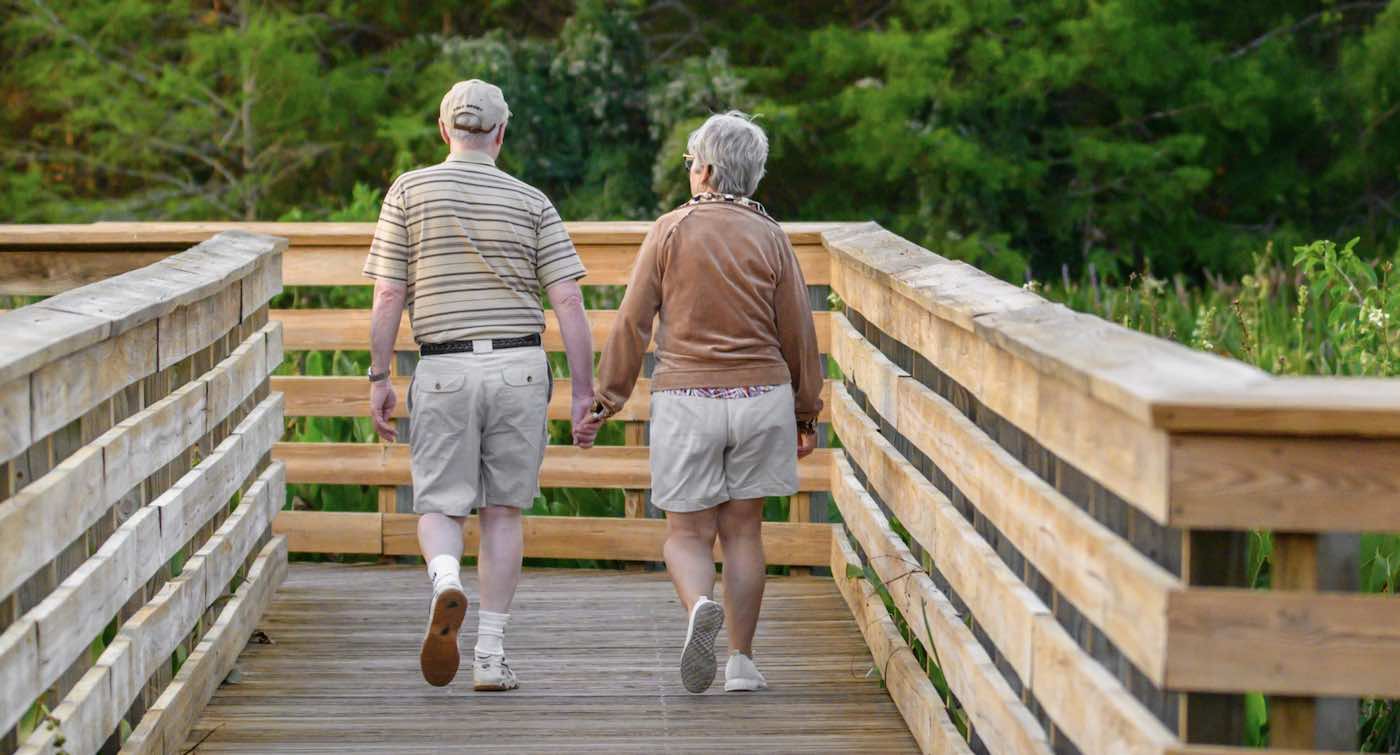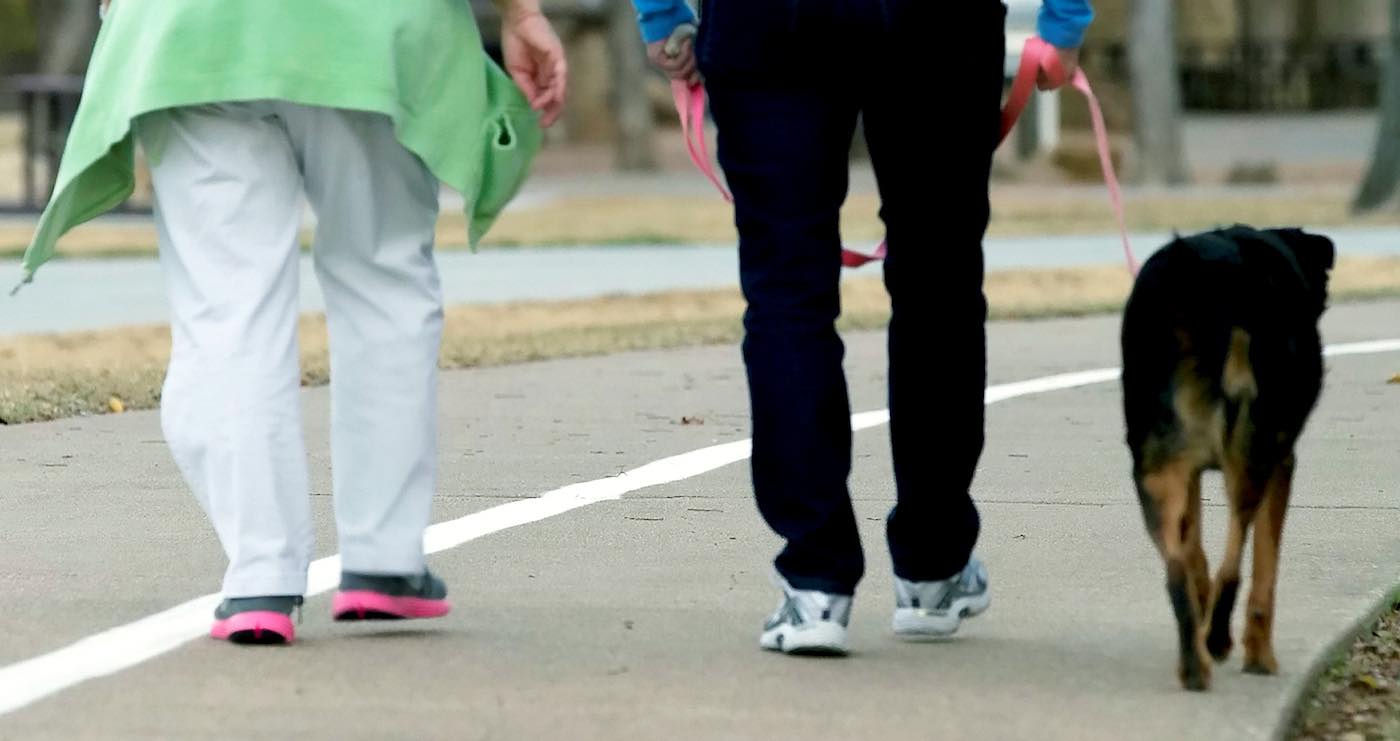
Walking just slightly faster helps older people stay active for longer, and stave off frailty.
Taking just 14 steps per minute more than their usual pace led to “meaningful” improvements in physical well-being for seniors who were frail or at risk of becoming frail, according to new findings.
The research team explained that frailty is a medically defined condition in older people that increases vulnerability to everyday stresses, leading to a higher risk of falls, hospitalization, and loss of independence.
Warning signs of frailty include 1) unintentional weight loss, 2) moving slowly, 3) feeling weak, 4) persistent tiredness and 5) low levels of physical activity.
Because most of these signs have a direct link to how active someone is, scientists say walking is a particularly effective way for older people to improve their overall health and quality of life, and maintain their independence longer.
But the question had remained until now: how fast do they need to walk to see real benefits.
Traditionally, the “talk test” has been used to guide walking intensity where people are encouraged to walk at a pace that makes it difficult to sing but still allows for comfortable conversation. But this method is subjective and difficult to apply consistently.
The new study, led by scientists at the University of Chicago Medicine, found that cadence—the number of steps per minute—may be the key, and the researchers developed a smartphone app designed to accurately measure walking pace, making it easier to integrate the beneficial practice into daily life.
WALK FOR YOUR BACK: Millions Who Suffer Back Pain Can Ease Symptoms Simply by Walking More–For ‘Huge Benefits’
Anesthesiologist Dr. Daniel Rubin became interested in walking cadence during his clinical experience evaluating older patients preparing for surgery, because they have a higher risk of complications associated with surgery.
“Traditionally, surgical teams have relied on physical function questionnaires to risk-stratify patients, but I thought there must be a way to develop more objective metrics,” he said in a media release.
Dr. Rubin and his colleagues studied older adults classified as either frail or pre-frail. The participants with an average age of 69 were enrolled in structured walking programs within their retirement communities, guided and assessed by clinical research staff. Cadence was measured by a device fitted to their thigh.
One group was encouraged to walk “as fast as safely possible” while another group walked at their usual comfortable pace. The results, published in the journal PLOS One, showed “clear” benefits.
Shoot for 100 steps per minute
Those who increased their cadence to around 100 steps per minute—14 steps per minute above their usual pace—experienced “substantial” improvements in their functional capacity (demonstrated by their ability to walk longer distances in a standardized test).

EXTRAORDINARY: 2 Years of Exercise Reversed 20 Years of Aging in the Heart, Says Longest-Ever Randomized Trial on Exercise
“People who haven’t experienced frailty can’t imagine how big a difference it makes to be able to not get tired going to the grocery store or not need to sit down while they’re out,” Rubin said.
Building on those findings, Rubin’s team created a smartphone app, called Walk Test, which they designed specifically for measuring walking cadence accurately because they didn’t necessarily trust the built-in trackers in smartphones.
The app, which is not yet available publicly, uses a novel open-source method to analyze the data measured by the phone. Validation testing showed the app counts steps-per-minute with “exceptional” accuracy, closely matching specialized, research-grade accelerometers.
LUCKY OR SMART? 94-Year-old Has No Health Issues–Thanks to Zumba Classes 3 Times a Week
But right now, people can easily maintain the beneficial cadence of 100 steps per minute by using a metronome app—or simply play an audio of a metronome at 100 beats per minute.
“Even casual walking had positive effects on our study participants, but for those who are able, increasing their walking pace judiciously can yield even greater results.”
SHARE THE WALKING TIPS With Seniors on Social Media…

